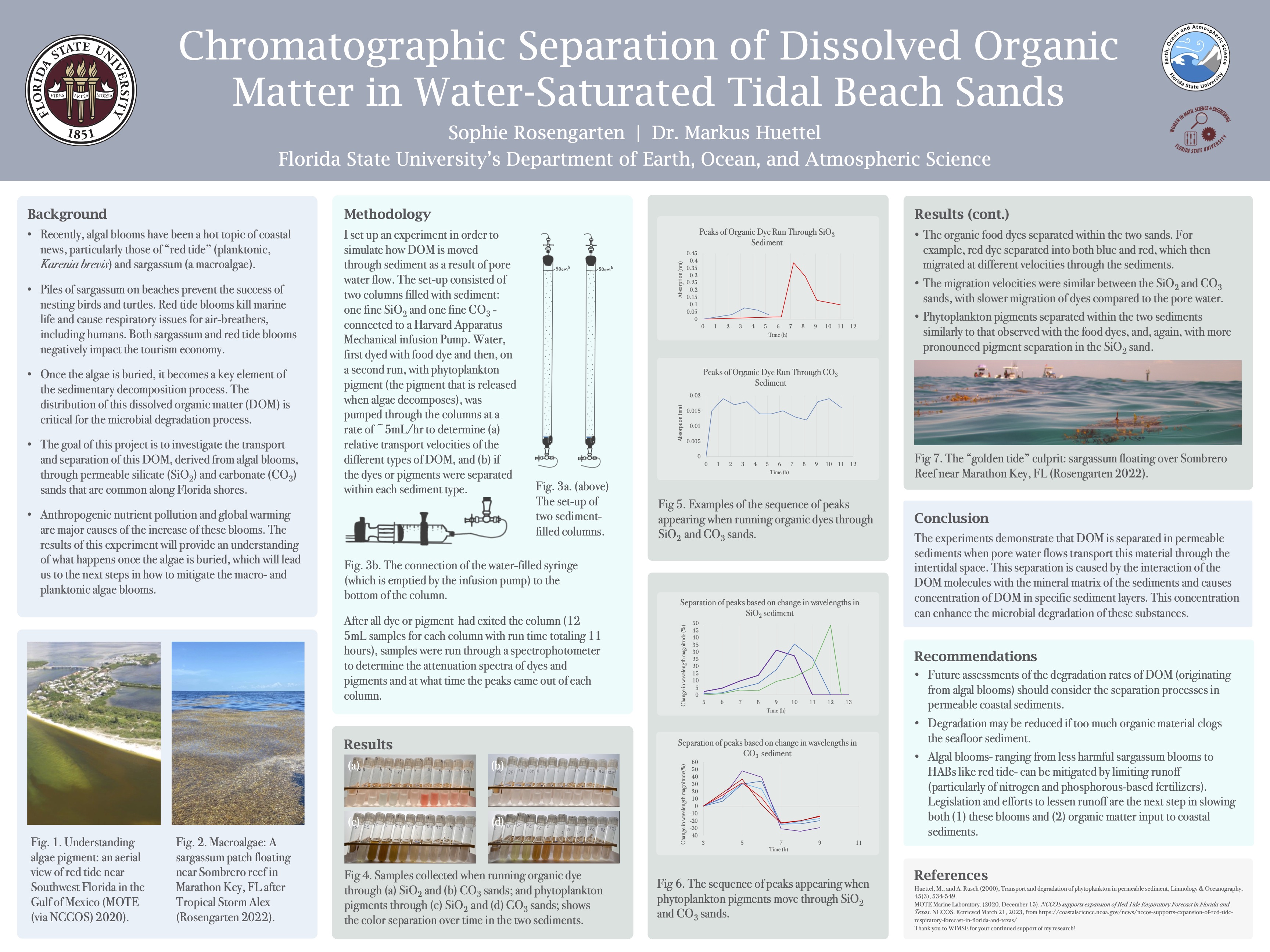Research Symposium
23rd annual Undergraduate Research Symposium, April 6, 2023
Sophie Rosengarten Poster Session 2: 1:30 pm - 2:30 pm/ Poster #374
BIO
I grew up exploring Florida's central-western coast and have since had a love for all things marine. I am now a junior double-majoring in Environmental Science and Geography and minoring in Psychology and, since coming to FSU, have become a member of WIMSE (The Society of Women in Math, Science, and Engineering), vice president of FSU's Seminole SCUBA Club, and an AAUS-certified scientific diver. I have talents and experience in lab- and field-based research, SCUBA, and science communications. I have fed and trained sea turtles in an aquarium, measured gas exchange in the beaches in the Florida Keys, and run tracer dyes through columns of sediment to understand the movement of organic matter in sands. I am interested in many different aspects of ocean science, ranging from the coasts to the big blue open water. I hope to one day combine my skills in SCUBA and research and my passion for science communications to contribute to ocean conservation and teach others about the wonderful world of water.
Chromatographic Separation of Dissolved Organic Matter in Water-Saturated Tidal Beach Sands
Authors: Sophie Rosengarten, Dr. Markus HuettelStudent Major: Environmental Science and Geography
Mentor: Dr. Markus Huettel
Mentor's Department: EOAS Mentor's College: Arts and Sciences Co-Presenters:
Abstract
Coastal nutrient enrichment causes massive macro- (Sargassum sp.) and microalgae (e.g. Karenia sp.) blooms that are washed onto Florida sandy beaches where they impair shore ecosystems and coastal economies. The algae is soon buried in the sediment, eventually degrading. During the decomposition process, a variety of dissolved organic substances are produced. When transported by tidal porewater flows through the beach sand, these organic substances interact with the sediment mineral matrix, which may lead to different transport velocities depending on the chemical characteristics of the organic substances. Such differences can lead to separation and concentration of dissolved organic substances, accelerating degradation. Since this process has not been investigated, we conducted an experiment to better understand the movement of the dissolved substances through beach sands.
The set-up consisted of two sand-filled columns: one fine silicate, the other fine carbonate. The columns were connected to an infusion pump that pumped water at defined fluid front velocity (5mL/h) through the sands. A first run with water containing organic dye revealed dissolved organic substance penetration velocity ranges for the two sand types. After all dye had exited the column (twelve 5mL samples/column, run time 11h), samples were run through a spectrophotometer to determine the peak times of absorption of dye. Findings show that red dye separated into pink and blue dye fractions while passing through the sands. The next step is to repeat this process using natural pigments.
Keywords: algae, coastal, spectrum


